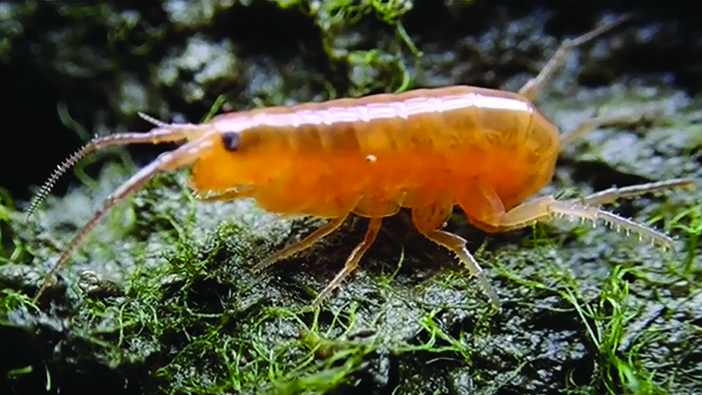Scientists show how biological mechanisms allow a parasitic worm to manipulate its host.
Salt marshes are home to tiny crustaceans called amphipods that keep a low profile: their gray-brown coloring helps them blend in with their surroundings, and they spend most of their time hiding under vegetation.
But when amphipods are infected with a parasitic worm called a trematode, they turn bright orange and lose their tendency to run for cover when exposed. This bizarre behavior makes them stand out to predators—as well to scientists.
Biologists at Brown University have been studying amphipods for roughly a decade. The project started as a training exercise for students in collaboration with the Marine Biological Laboratory research institution. Over time, with advancements in molecular genetics, computational tools, and biomedical technology, faculty and student scientists have made unexpected discoveries about the relationship between amphipods and the parasitic worms that prey upon them.
In a new study published in Molecular Ecology, researchers provide a detailed analysis of the molecular mechanisms that allow the parasites to manipulate their hosts, and explain what’s happening to the amphipod’s biology that causes it to respond to the parasite in such distinct ways.
“Characterizing the molecular mechanisms of manipulation is important to advancing understanding of host–parasite coevolution,” says study author David Rand, PhD, a professor of natural history and chair of the ecology, evolution, and organismal biology department at Brown.
The relevance of the findings extends far beyond the salt marsh, Rand says, especially when considered in context of certain pathogens that infect humans.
While food-borne trematodes can make humans very sick, they don’t have the same type of “zombie” effect. The amphipod system is closer to a malaria example, Rand notes, where the plasmodium parasite is carried by a mosquito that serves as an intermediate host. Studies have shown that mosquitos carrying the parasite can be more attracted to humans than to uninflected mosquitoes.
“This may be an example of a parasite manipulating an intermediate host to ensure its own transmission between hosts,” Rand says. “Rabies could be another relevant example: it drives infected individuals ‘mad’ so they bite others and infect the next host. Learning the molecular mechanisms of these kinds of host-parasite interactions can have important implications for how to manage pathogens generally, and in humans.”




